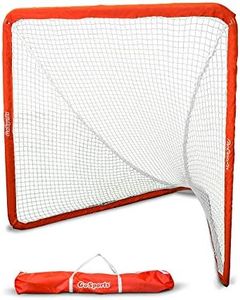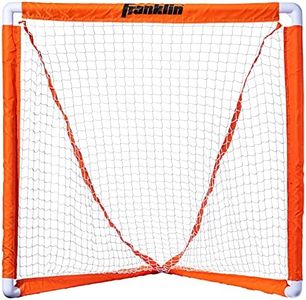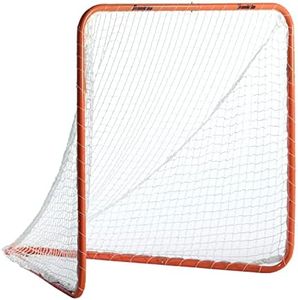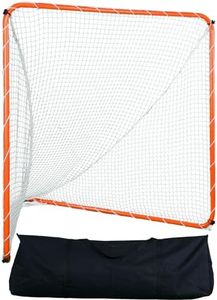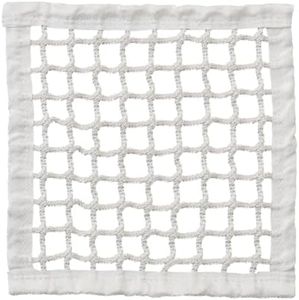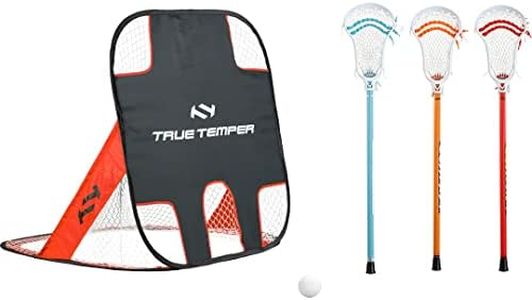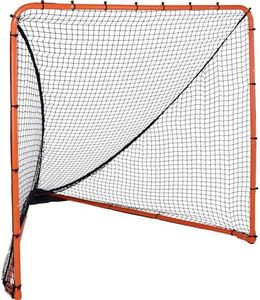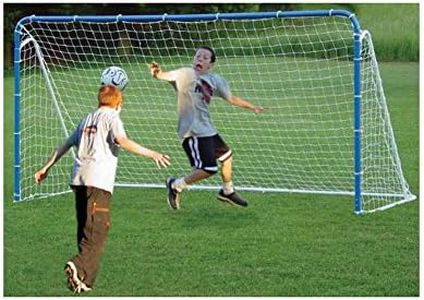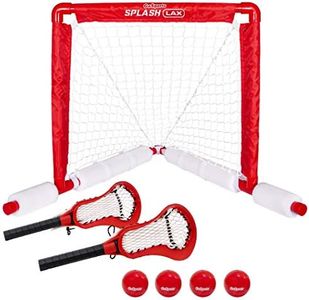We Use CookiesWe use cookies to enhance the security, performance,
functionality and for analytical and promotional activities. By continuing to browse this site you
are agreeing to our privacy policy
10 Best Lacrosse Goals
From leading brands and best sellers available on the web.Buying Guide for the Best Lacrosse Goals
Choosing the right lacrosse goal is about understanding where you'll use it, how often you'll play, and who will be using it. Lacrosse goals come in various sizes, materials, and designs to suit different age groups, skill levels, and types of play—from backyard recreation to official competitions. To pick the best fit, focus on where you’ll set it up, how portable you need it to be, and what level of durability you require. Knowing these basics will ensure you get a goal that’s safe, practical, and enjoyable to use.SizeThe size of a lacrosse goal is crucial because it directly affects the type of play and who can use it. Official game play goals are typically 6x6 feet, which are used at professional, high school, and most club levels. For younger children or backyard practice, smaller goals are common—these provide a manageable target and are easier to move and store. Think about the age and skill level of the primary players: choose regulation-size for competitive training, mid-size for casual teen and adult play, and smaller goals for kids or limited backyard space.
MaterialMaterial determines the durability and weight of the goal. Steel frames are heavier and very sturdy, making them suitable for frequent, rough use or permanent outdoor setup. Aluminum frames offer a balance between durability and portability, being lighter yet strong enough for regular play. Some practice or portable goals use plastic, which is lightweight and affordable but less durable for heavy shooting. Consider how often you’ll move the goal and how much wear and tear it will face: choose steel for stationary, heavy use; aluminum for frequent moving and variety; plastic only for young kids or light use.
PortabilityPortability refers to how easy it is to set up, take down, and move the lacrosse goal. Some goals feature foldable frames and quick-assembly designs using snap buttons or push pins. Others may require tools and more time to assemble but offer greater sturdiness once set up. If you plan to transport your goal between locations or need to store it away after each use, look for features like collapsible frames or carrying bags. If you have a permanent spot in the yard or field, portability is less of a concern.
Net QualityNet quality affects how long your goal will last and how well it stands up to powerful shots. Nets are measured by thickness, often described in millimeters or as 'ply.' Thicker, high-ply nets are more durable and resist tearing, making them suitable for advanced players and regular use. Thinner nets are lighter and may suffice for younger players or occasional practice. Match the net quality to the intensity of usage—serious players need a tough, tightly-woven net, while casual use can get by with a lighter option.
Weather ResistanceWeather resistance is important if your goal will be left outdoors. Frames treated with rust-resistant coatings and UV-protected nets protect the goal from sun, rain, and other elements. A more weather-resistant goal lasts longer and maintains performance outside. Consider this particularly if you don’t plan to move or cover your goal after use. If it will be stored indoors, weather resistance matters less.

